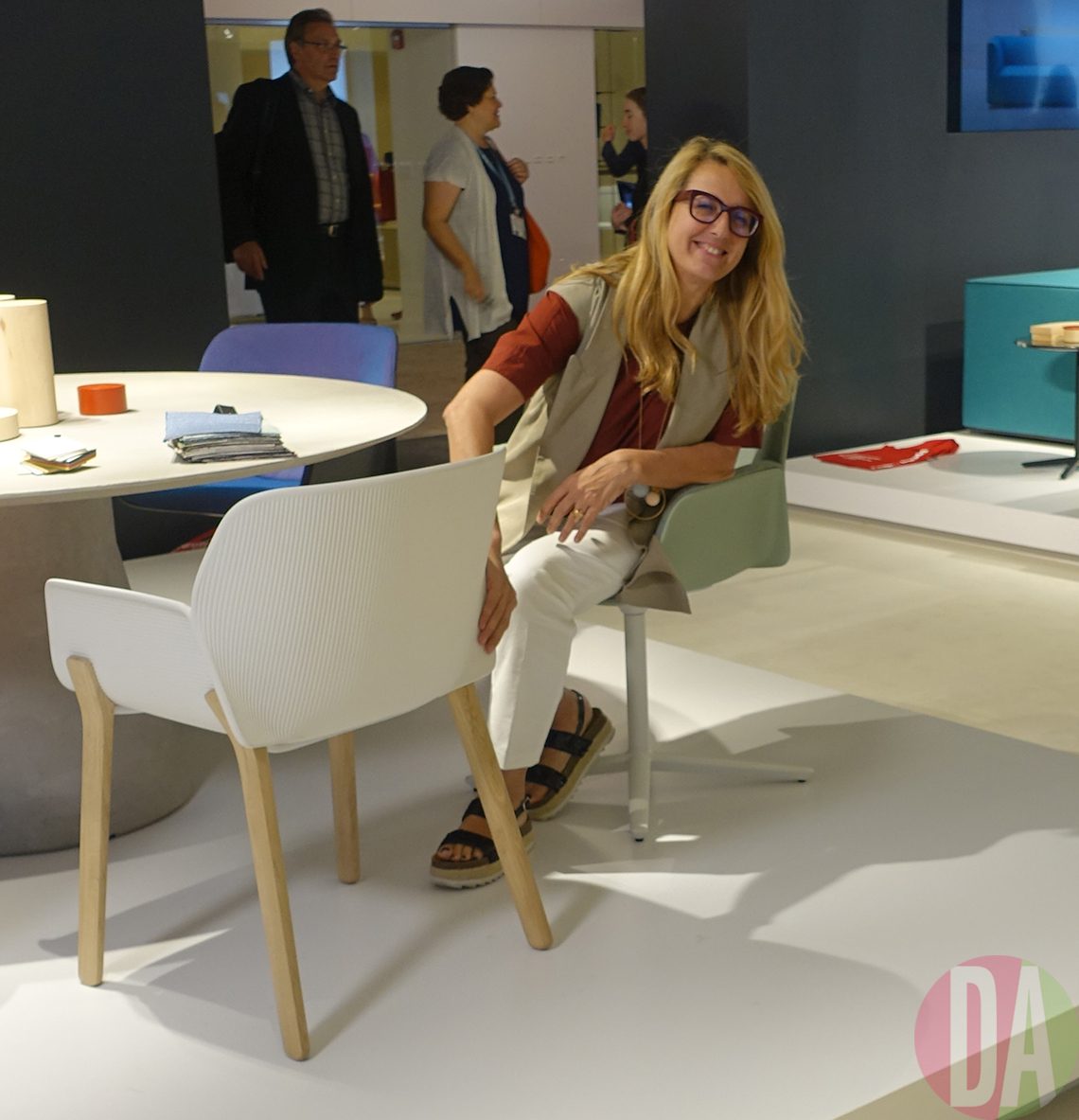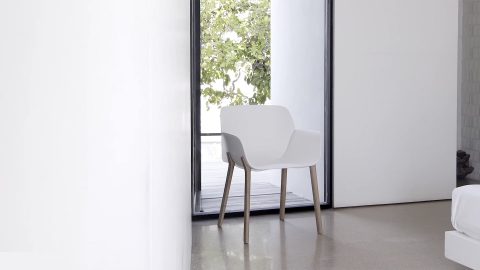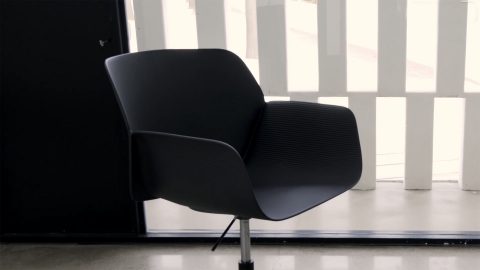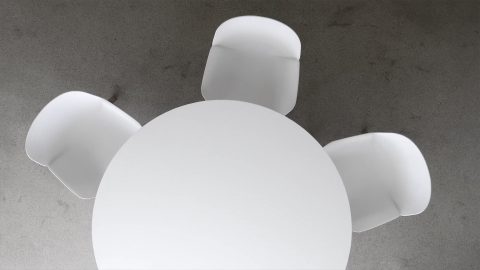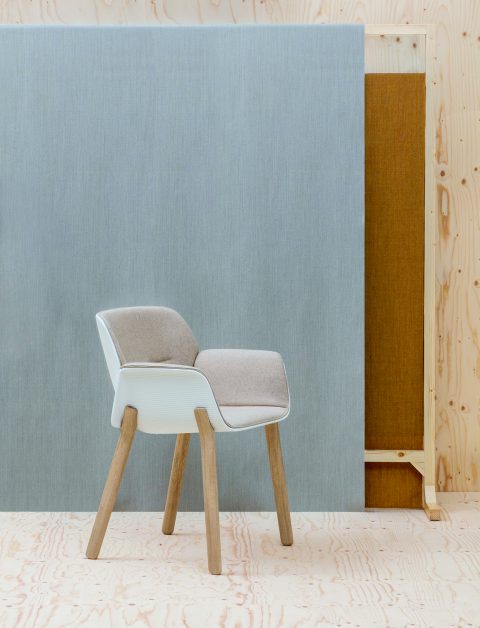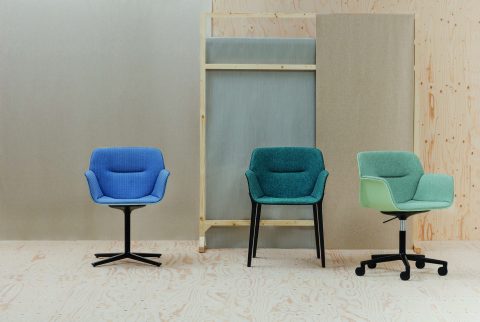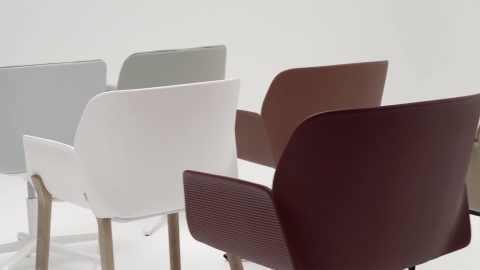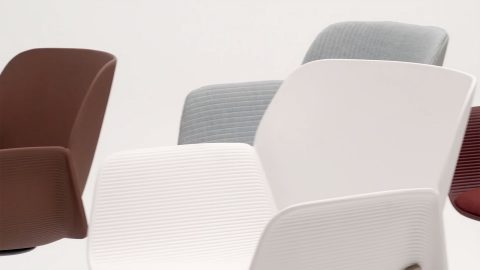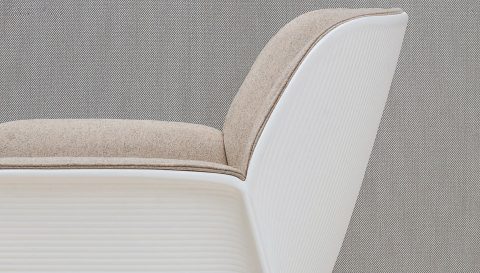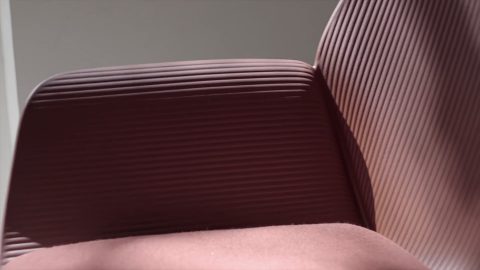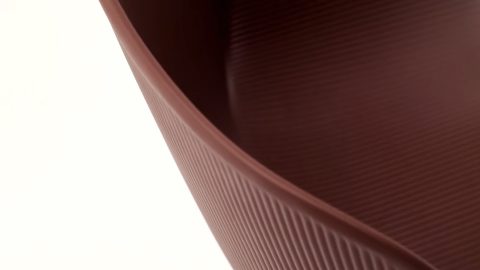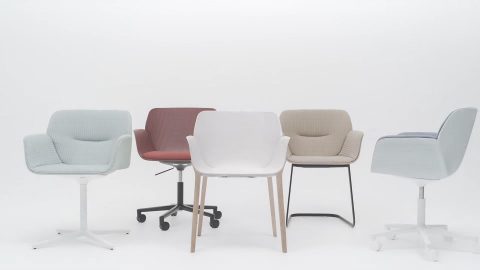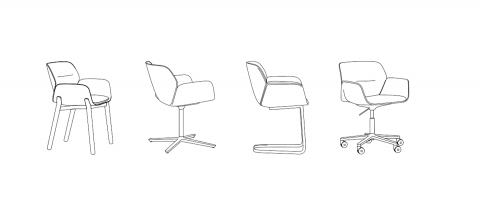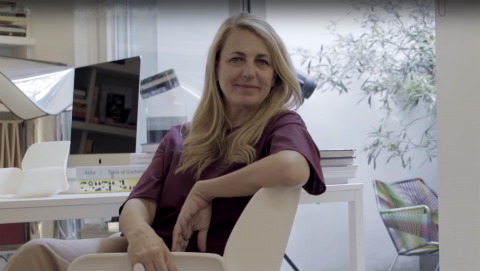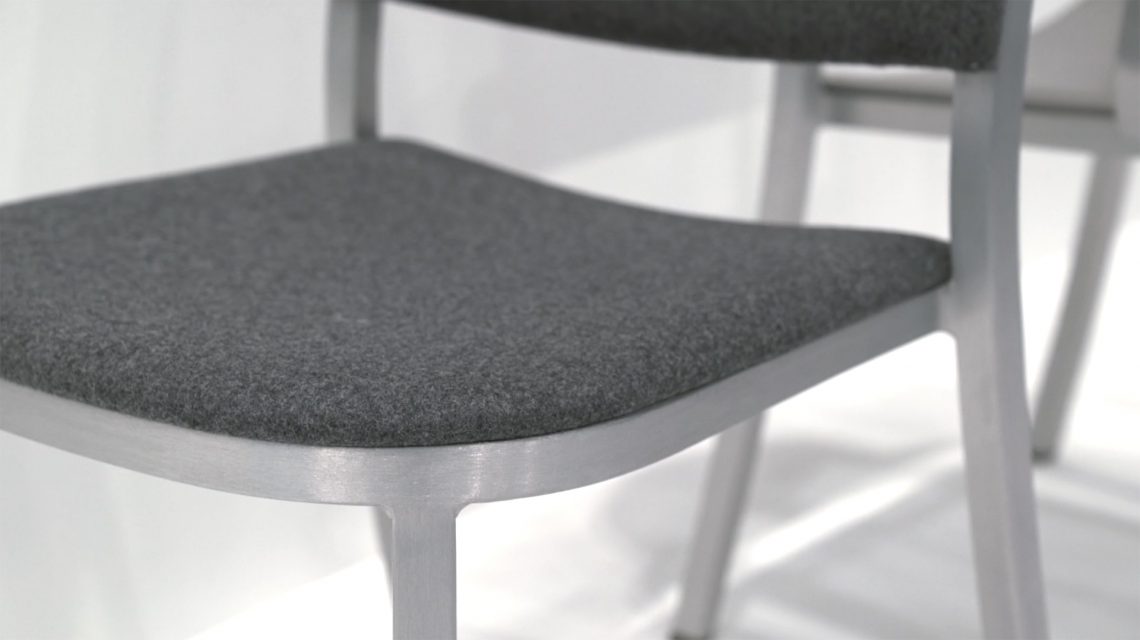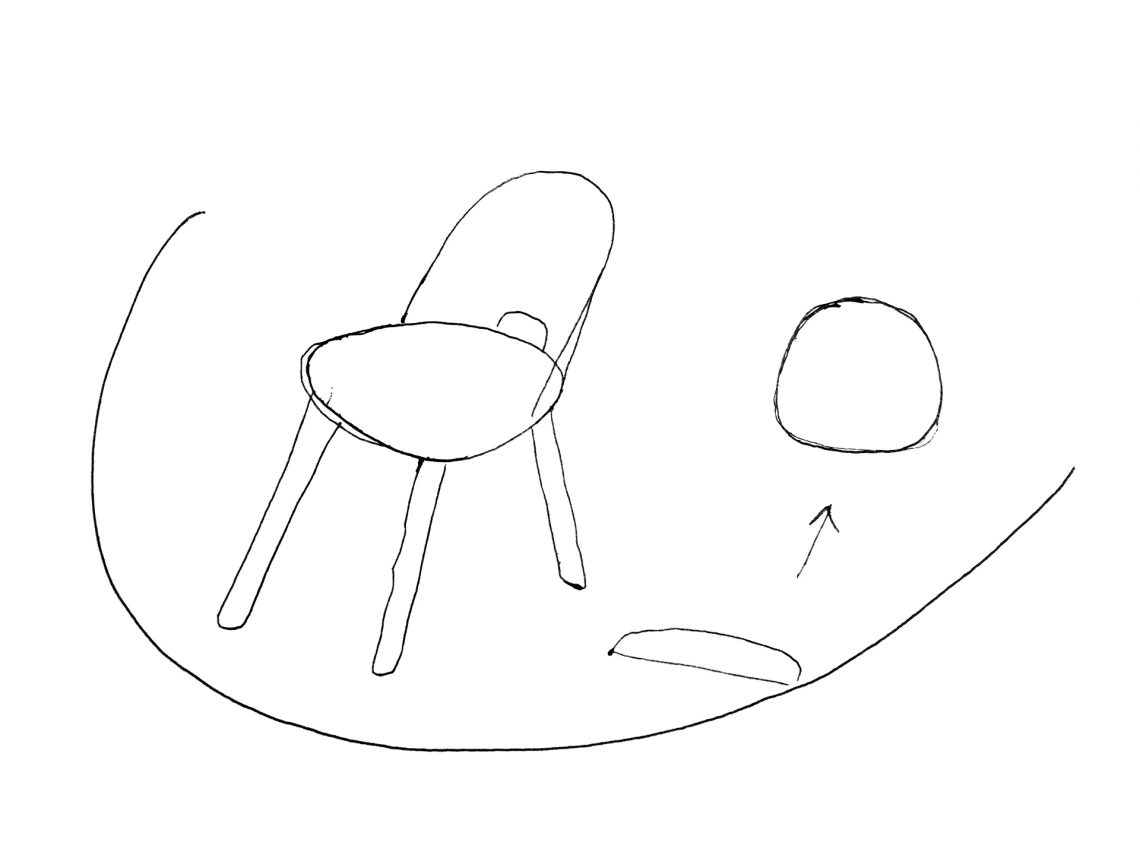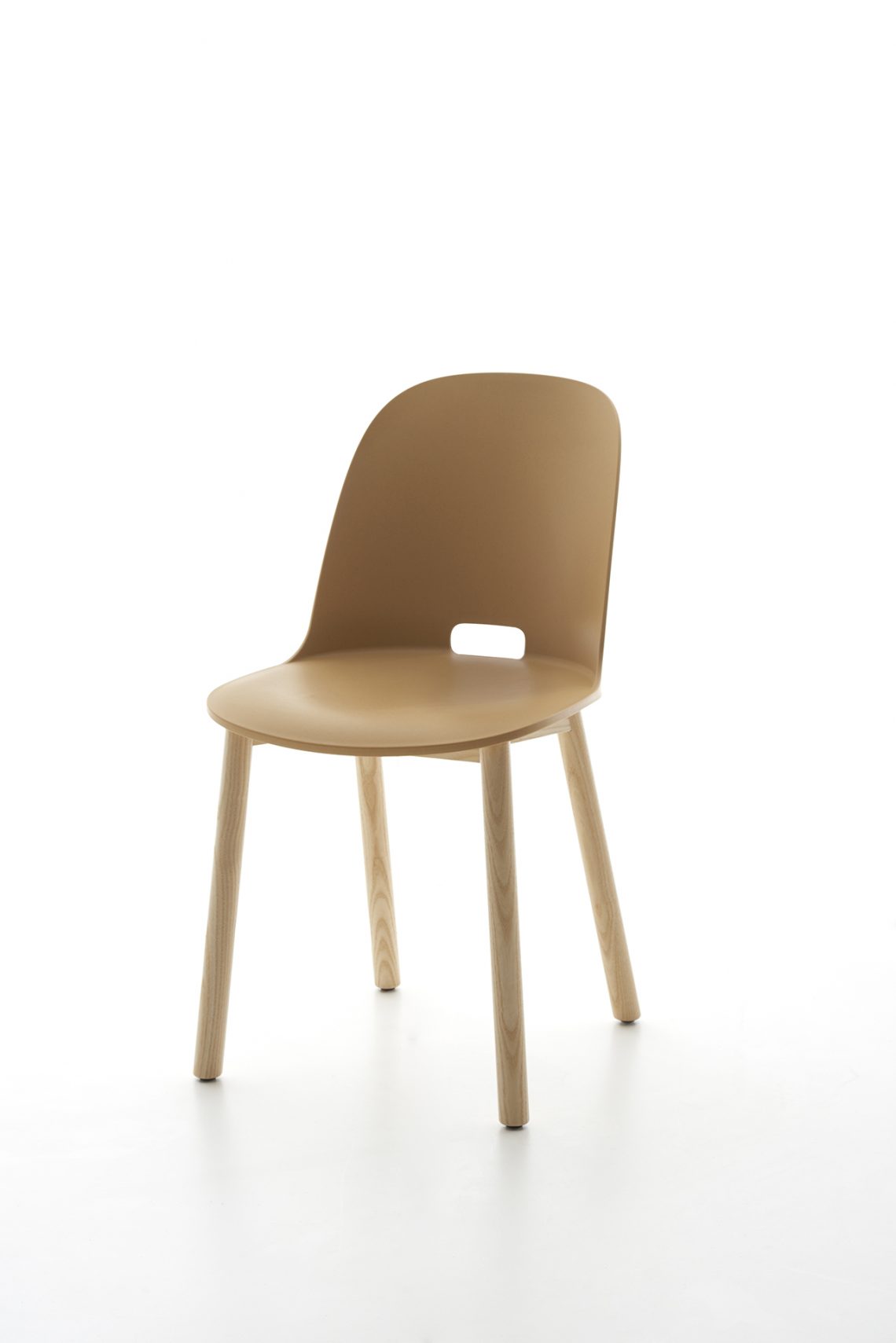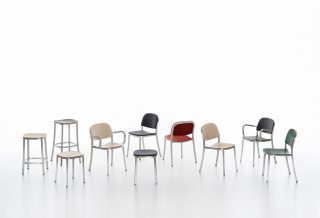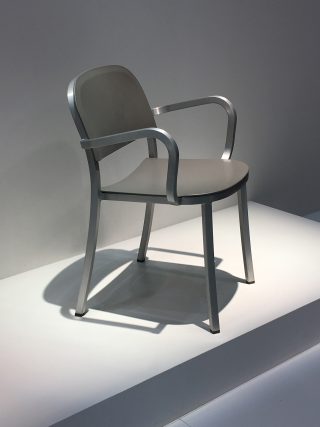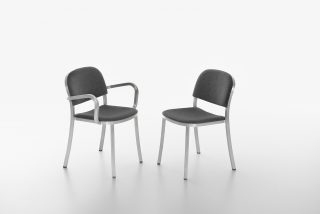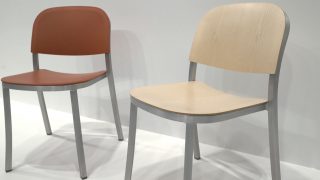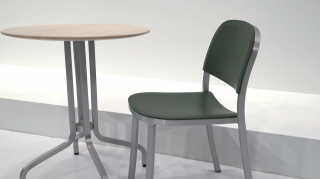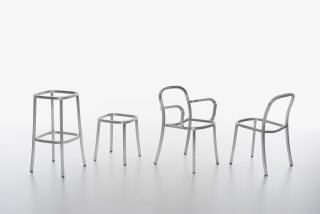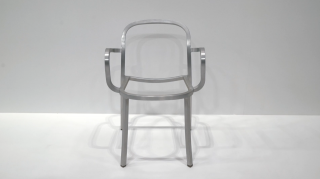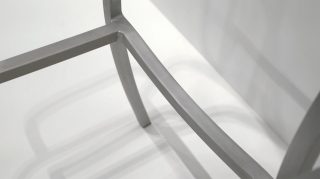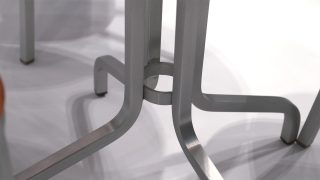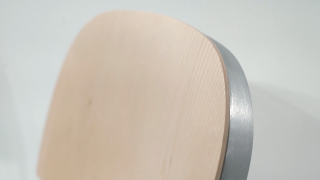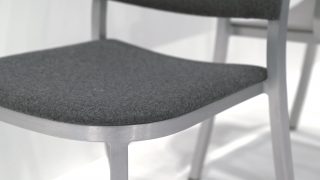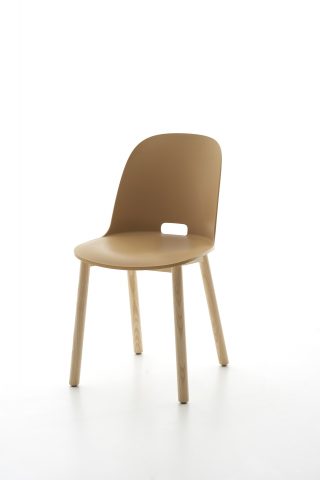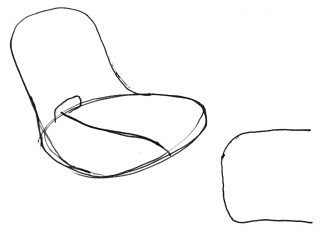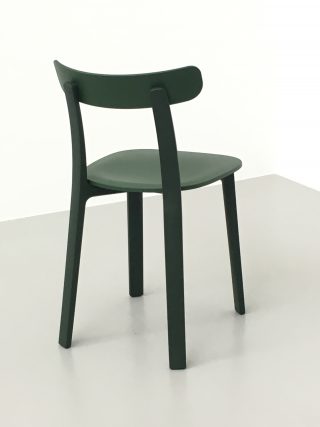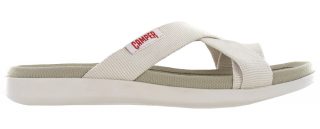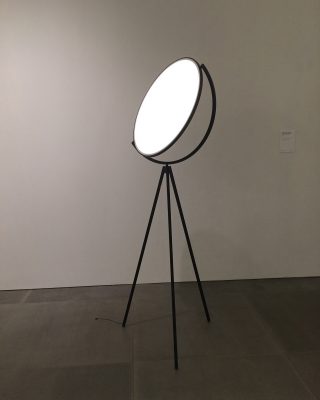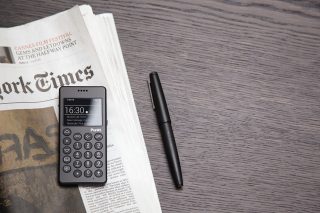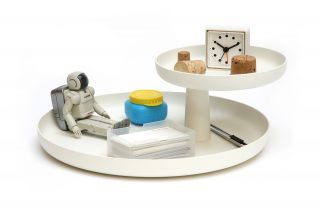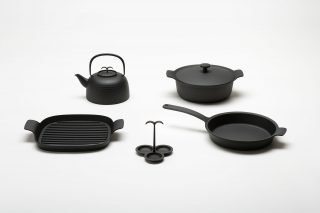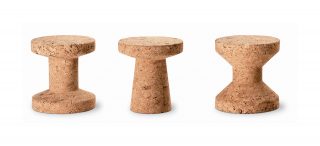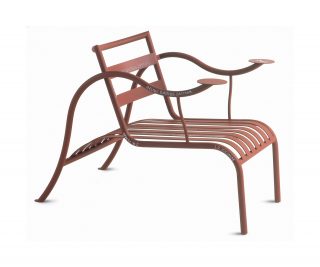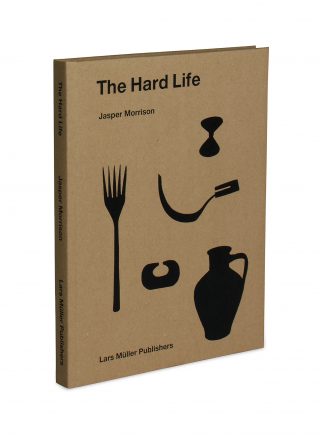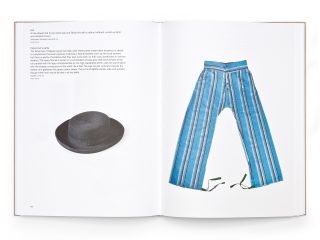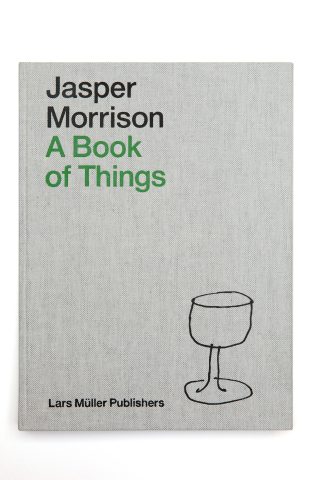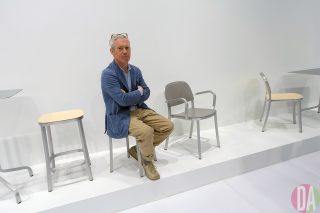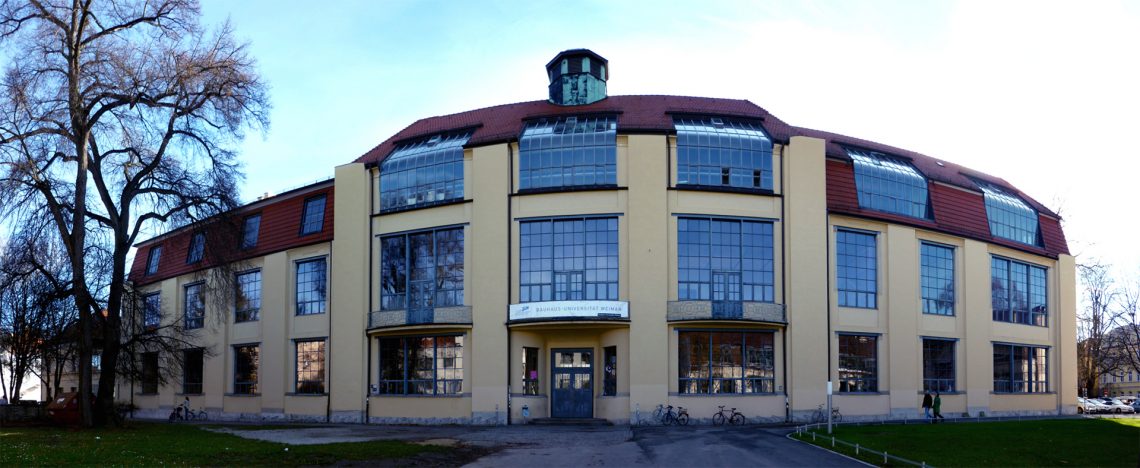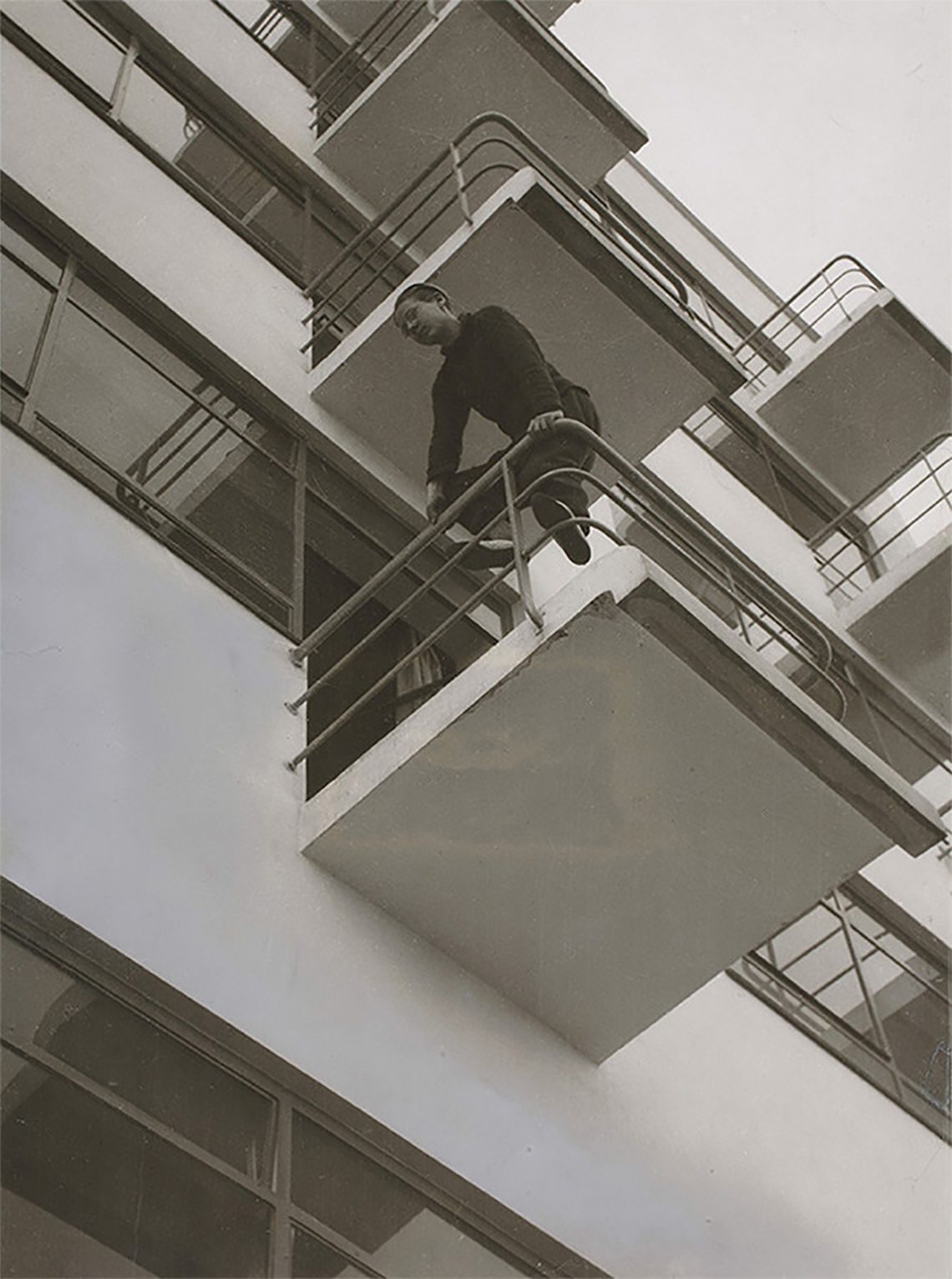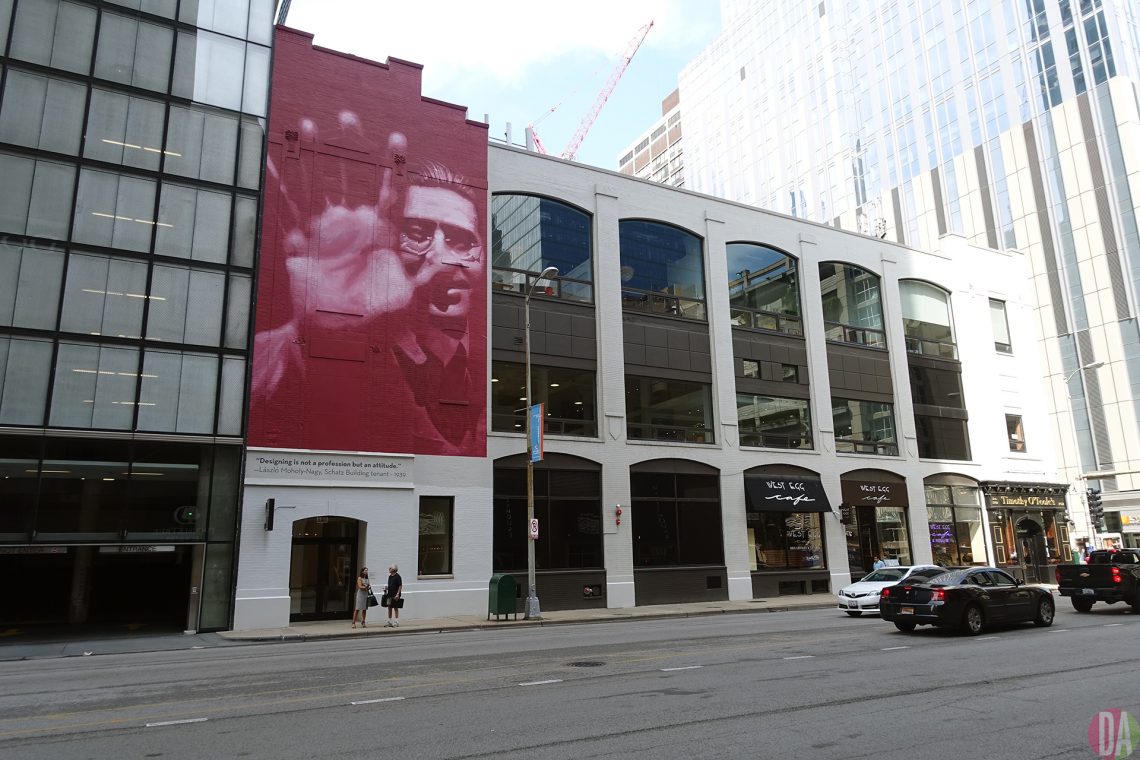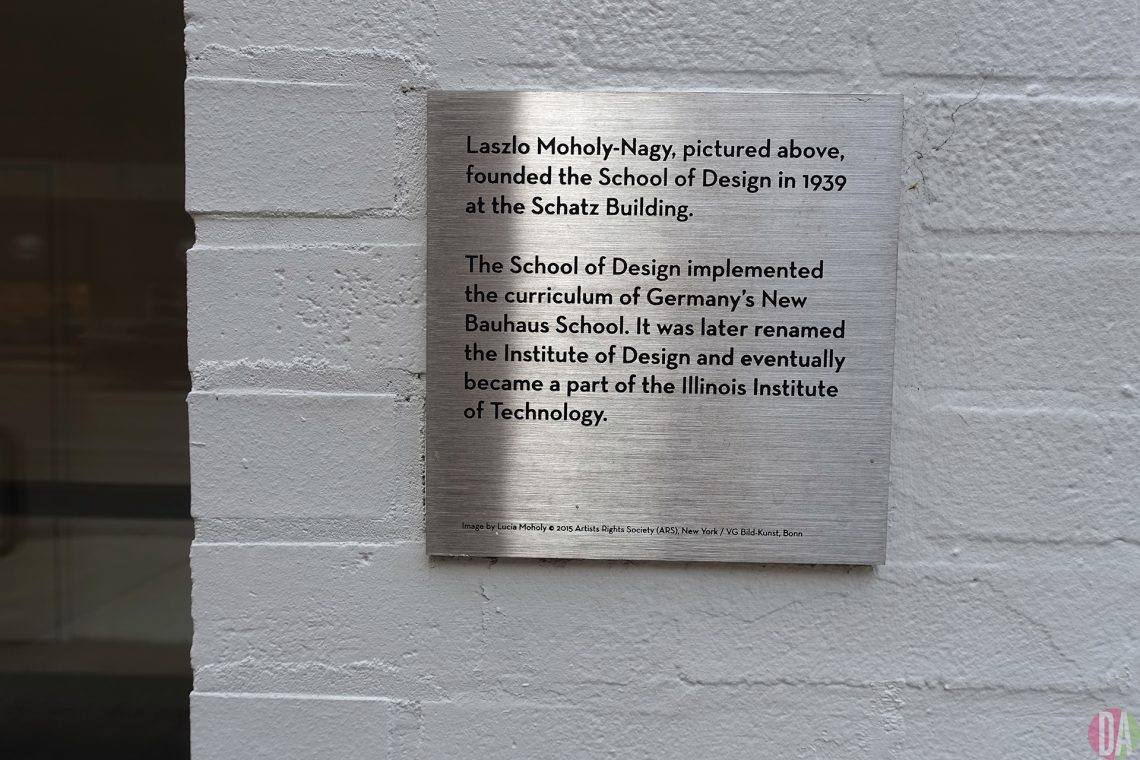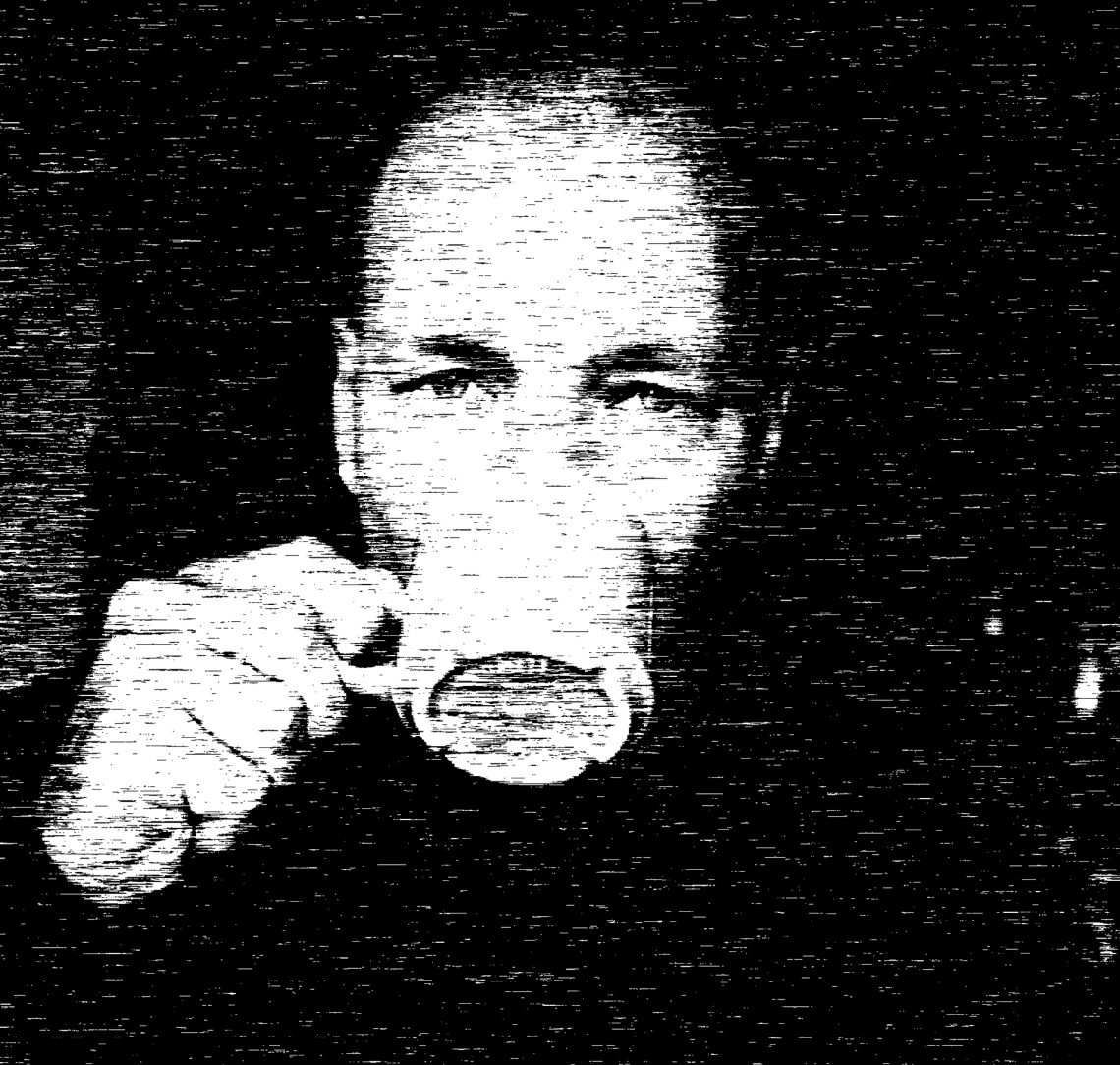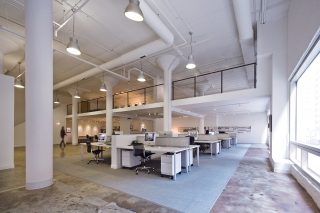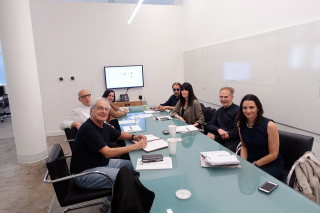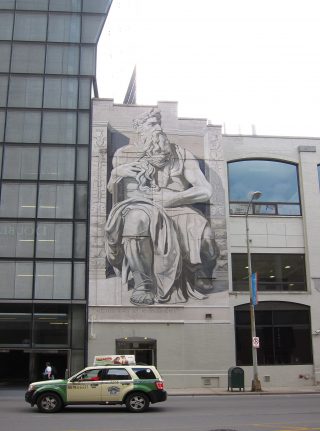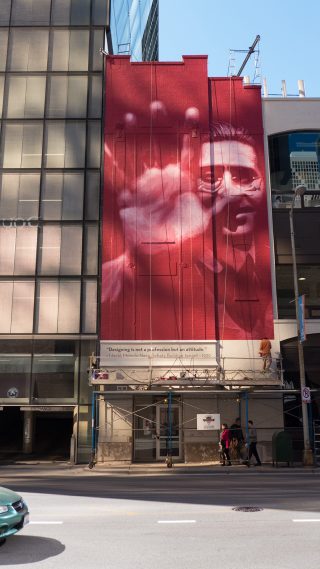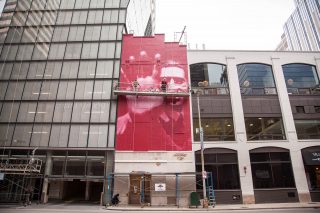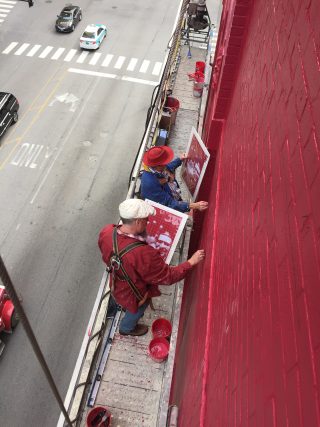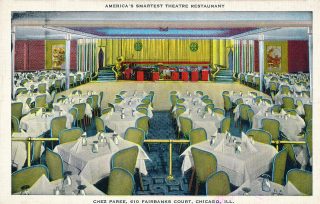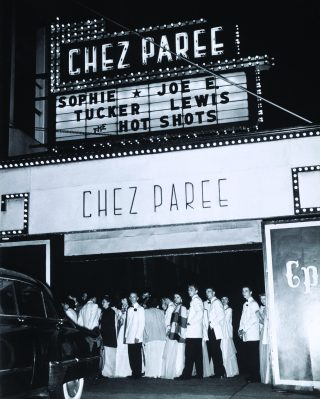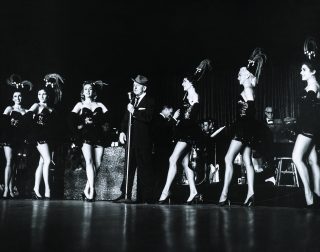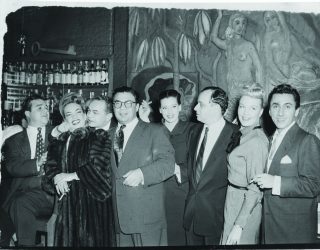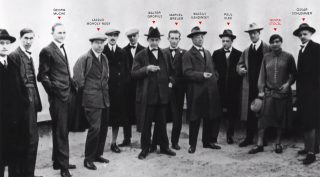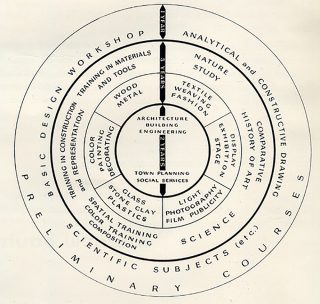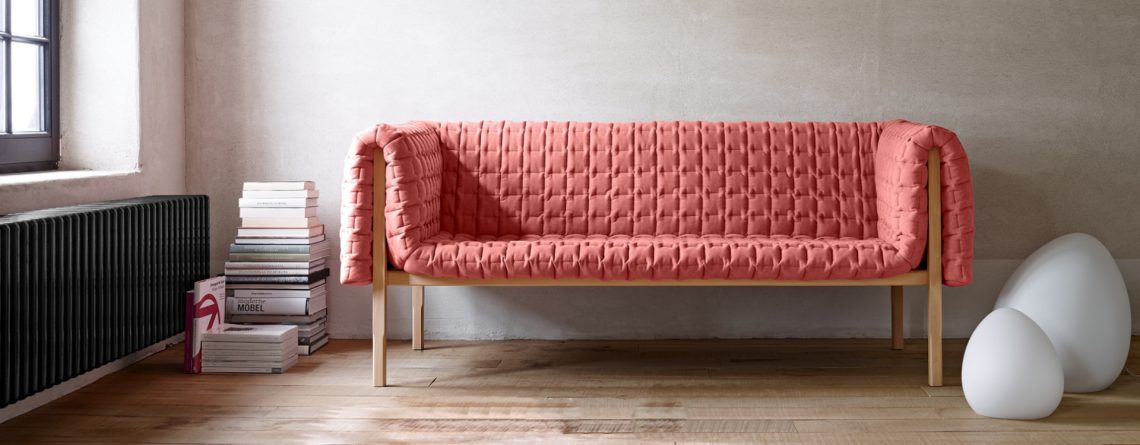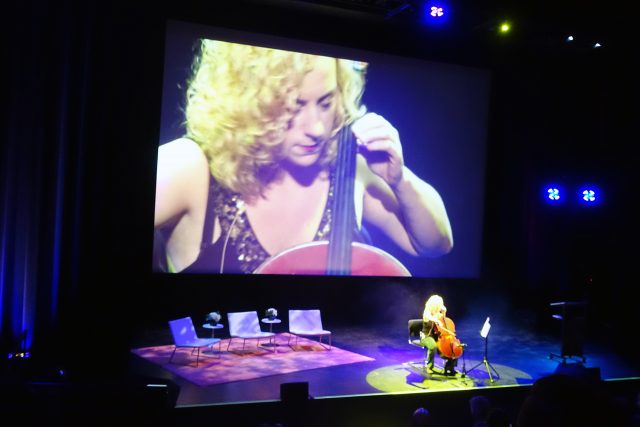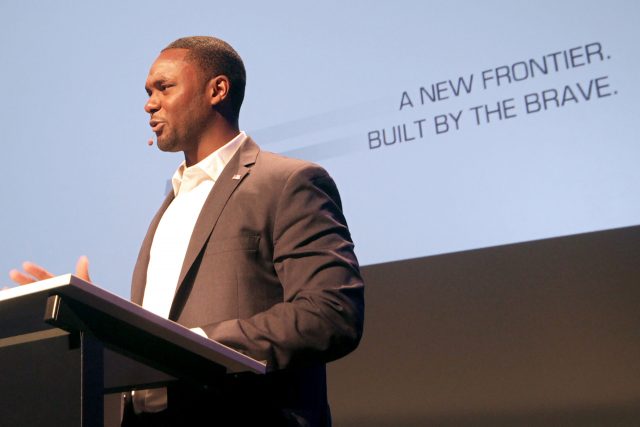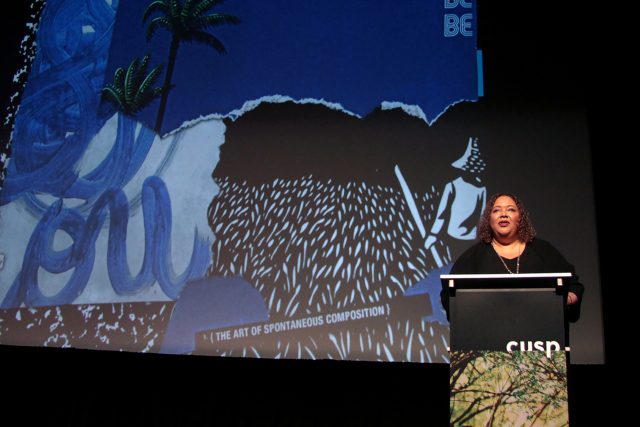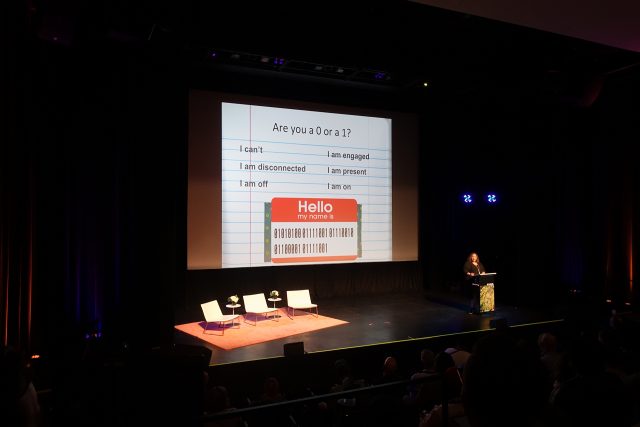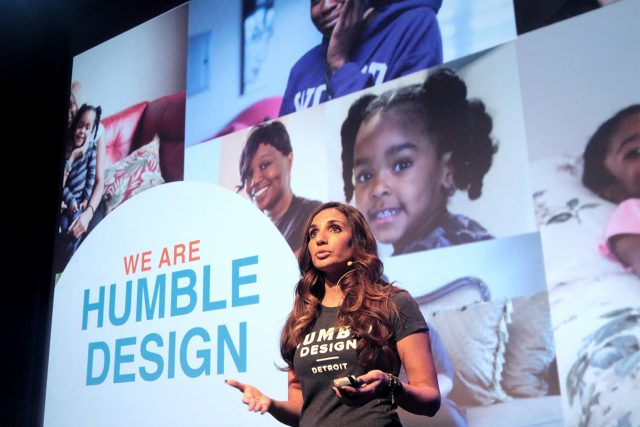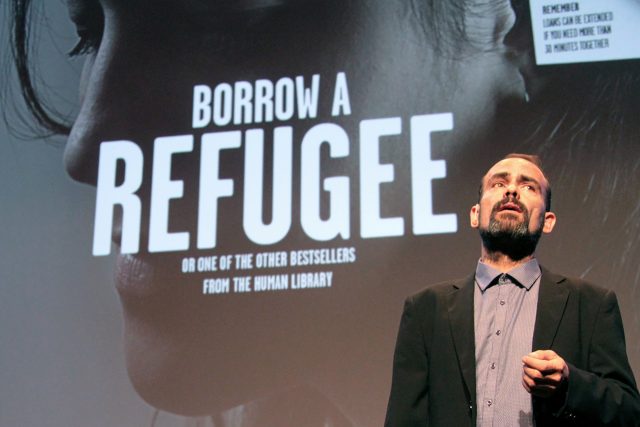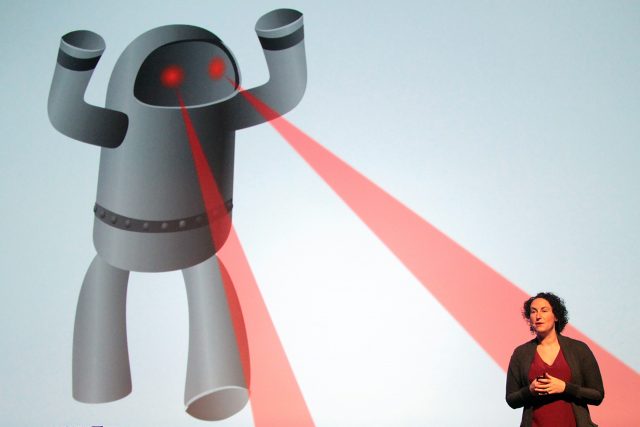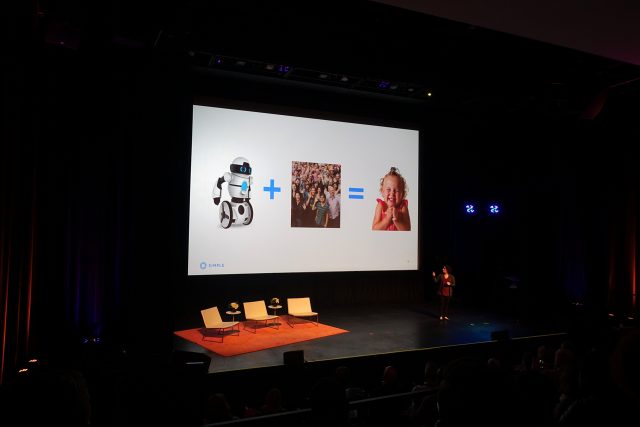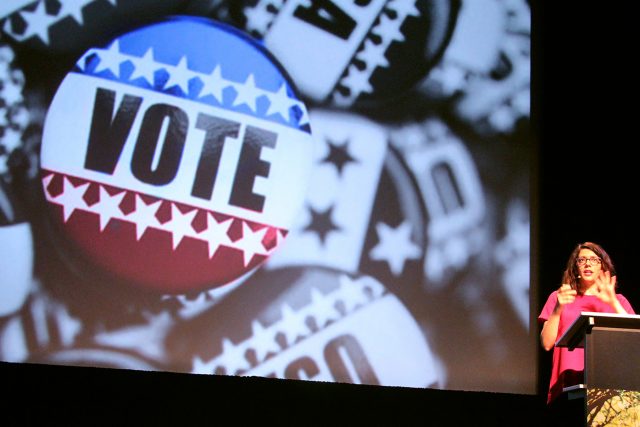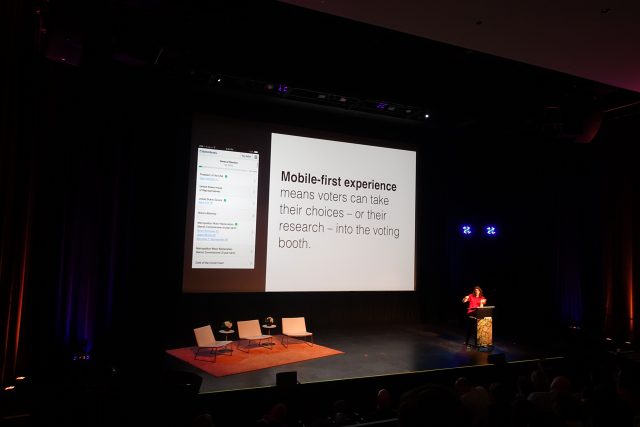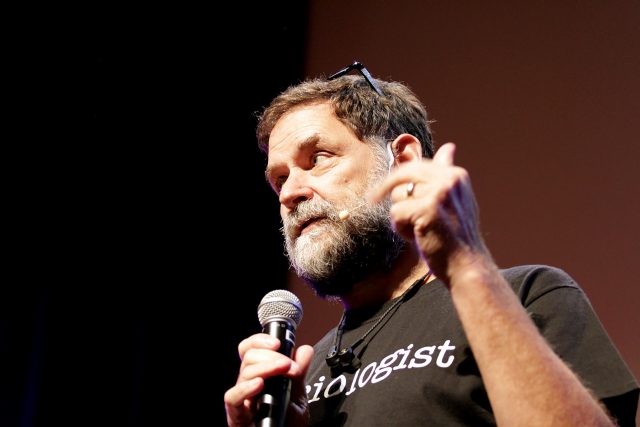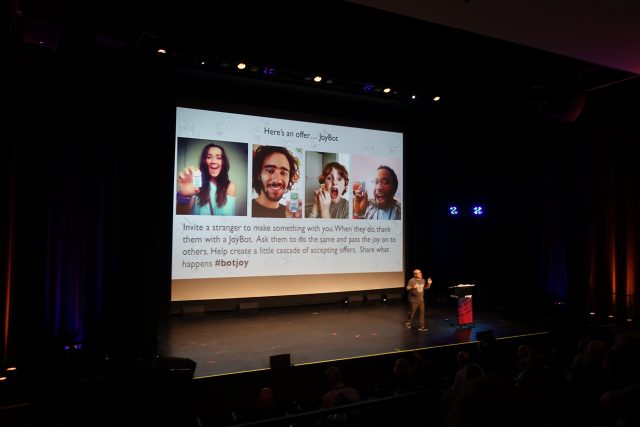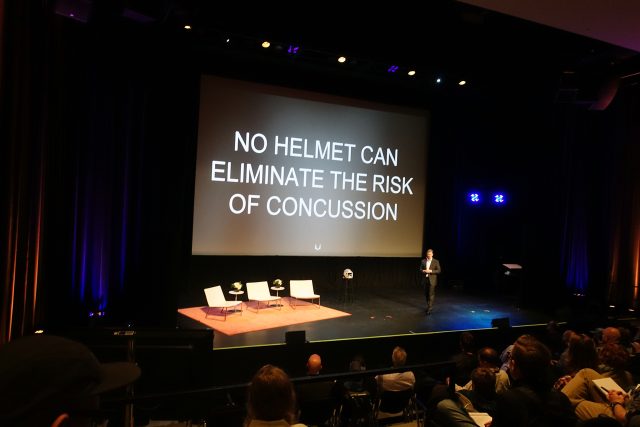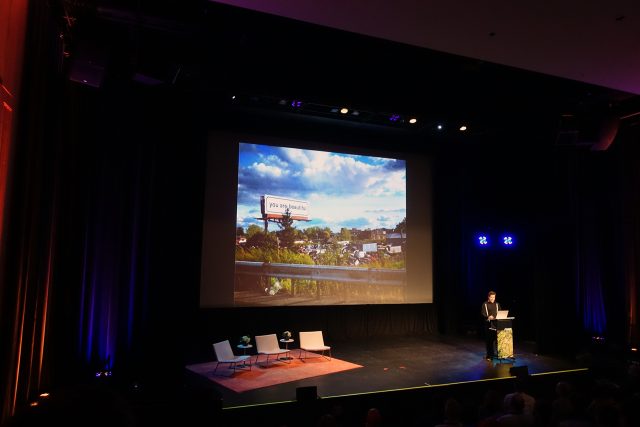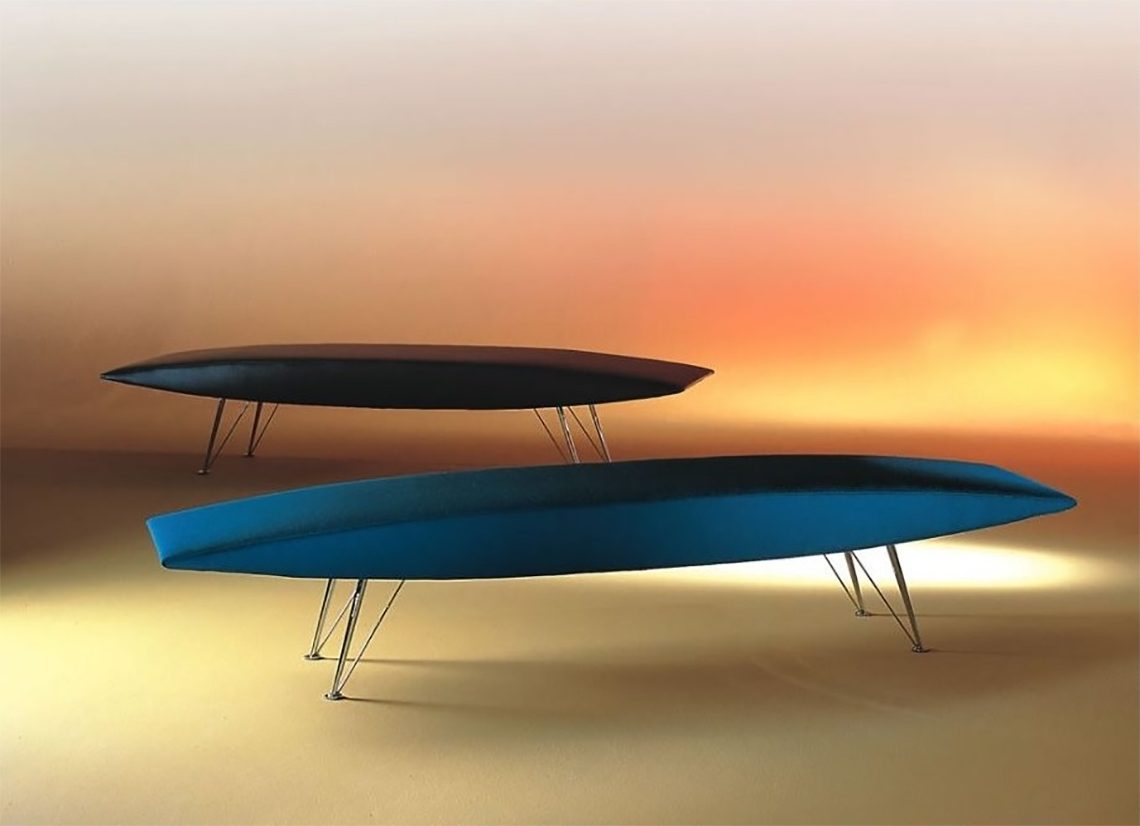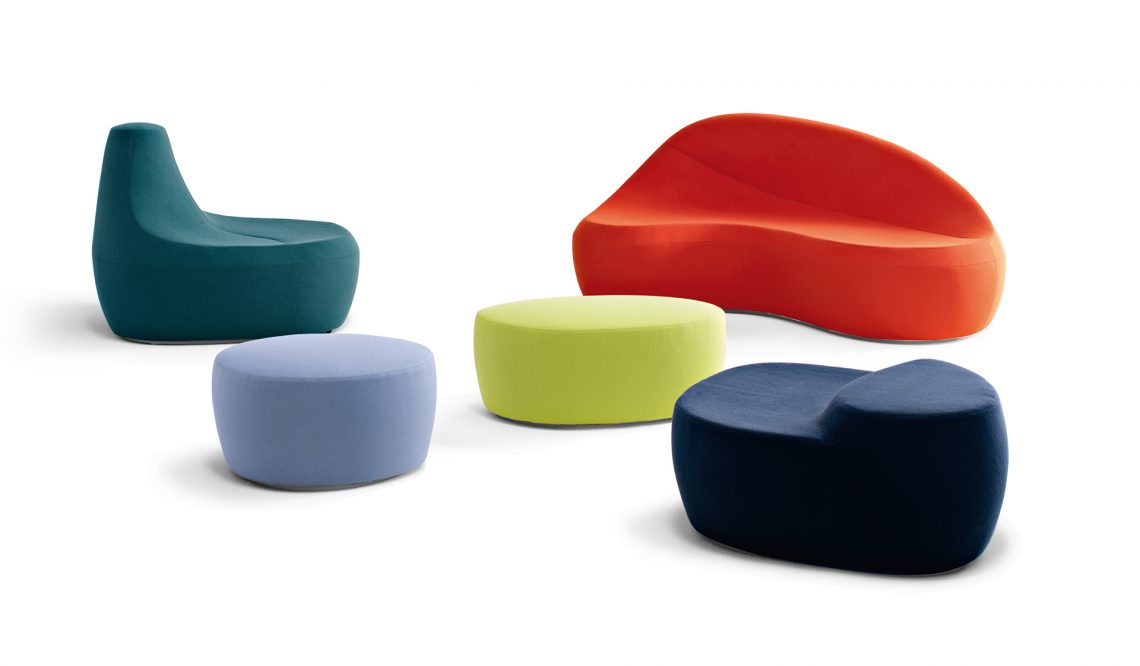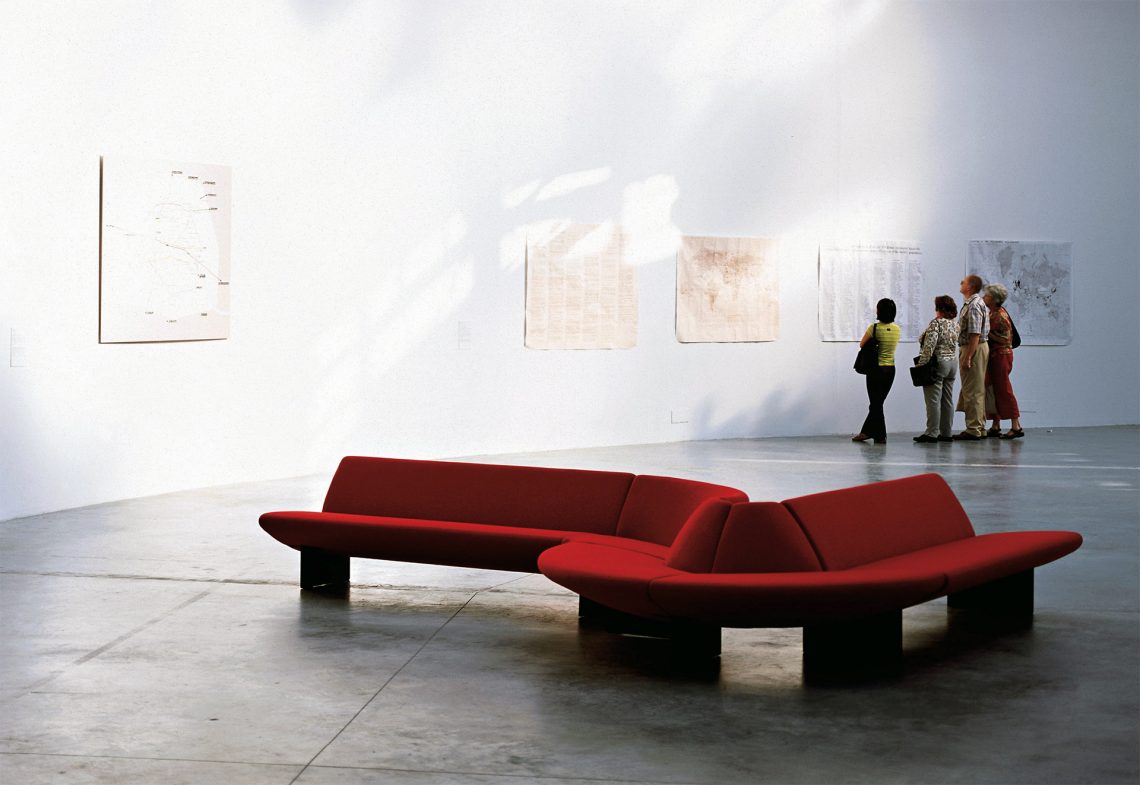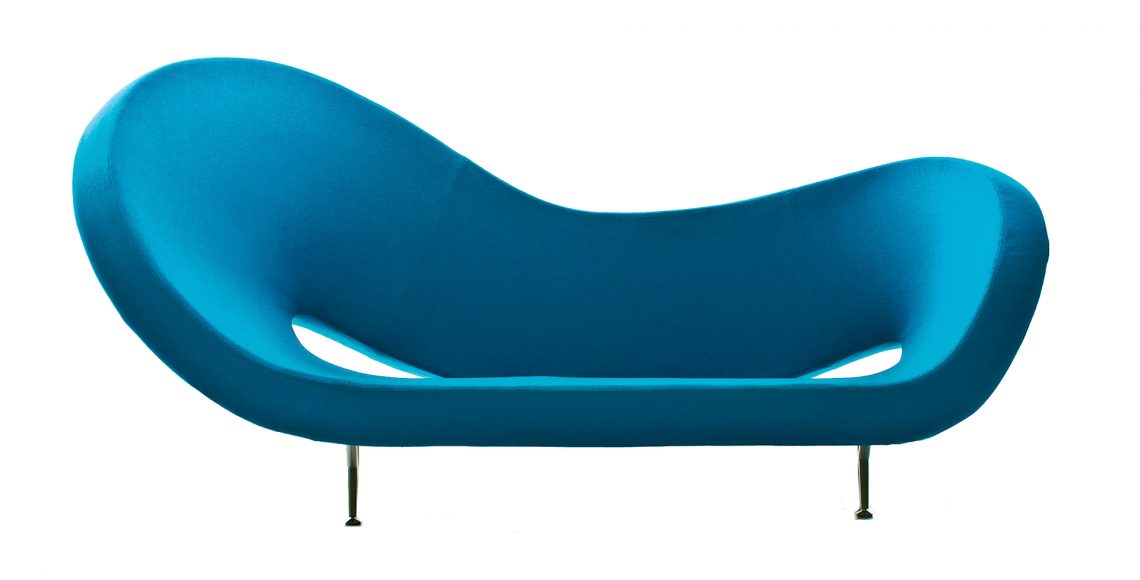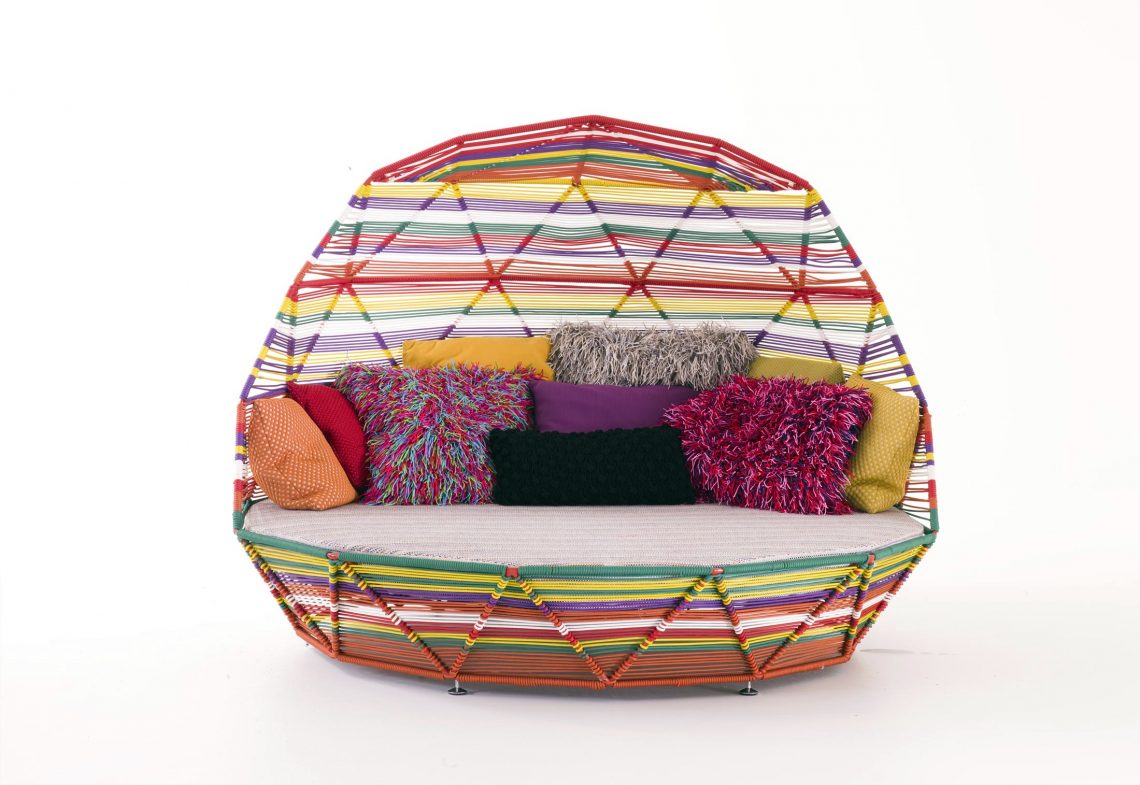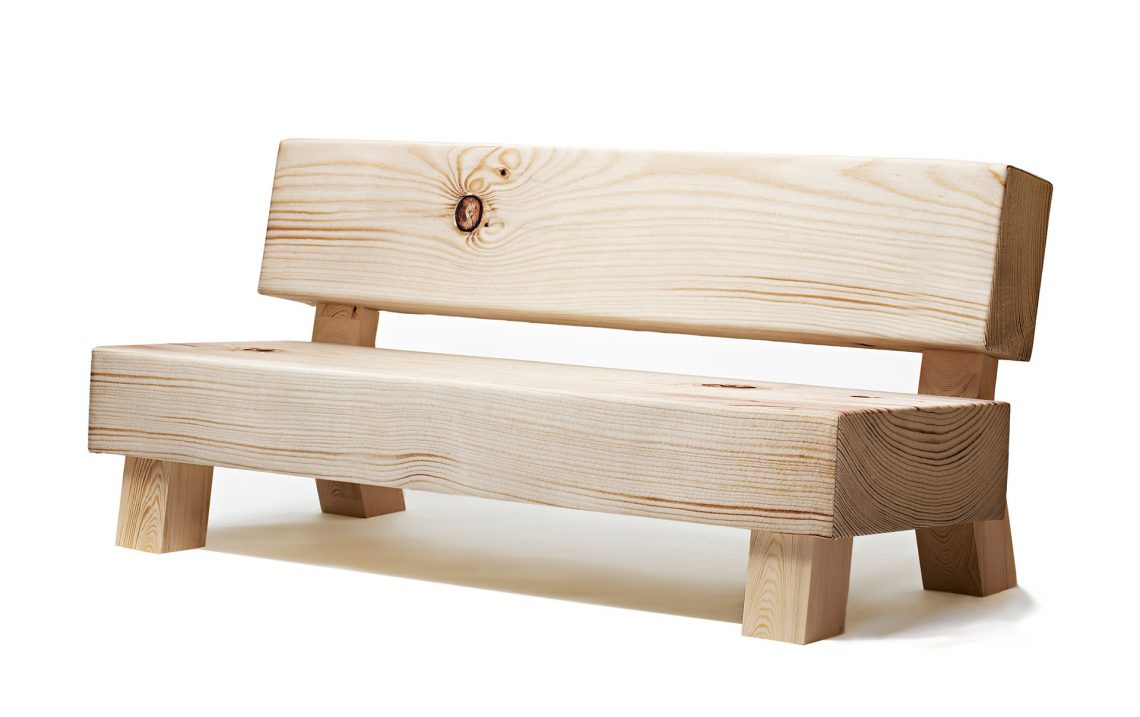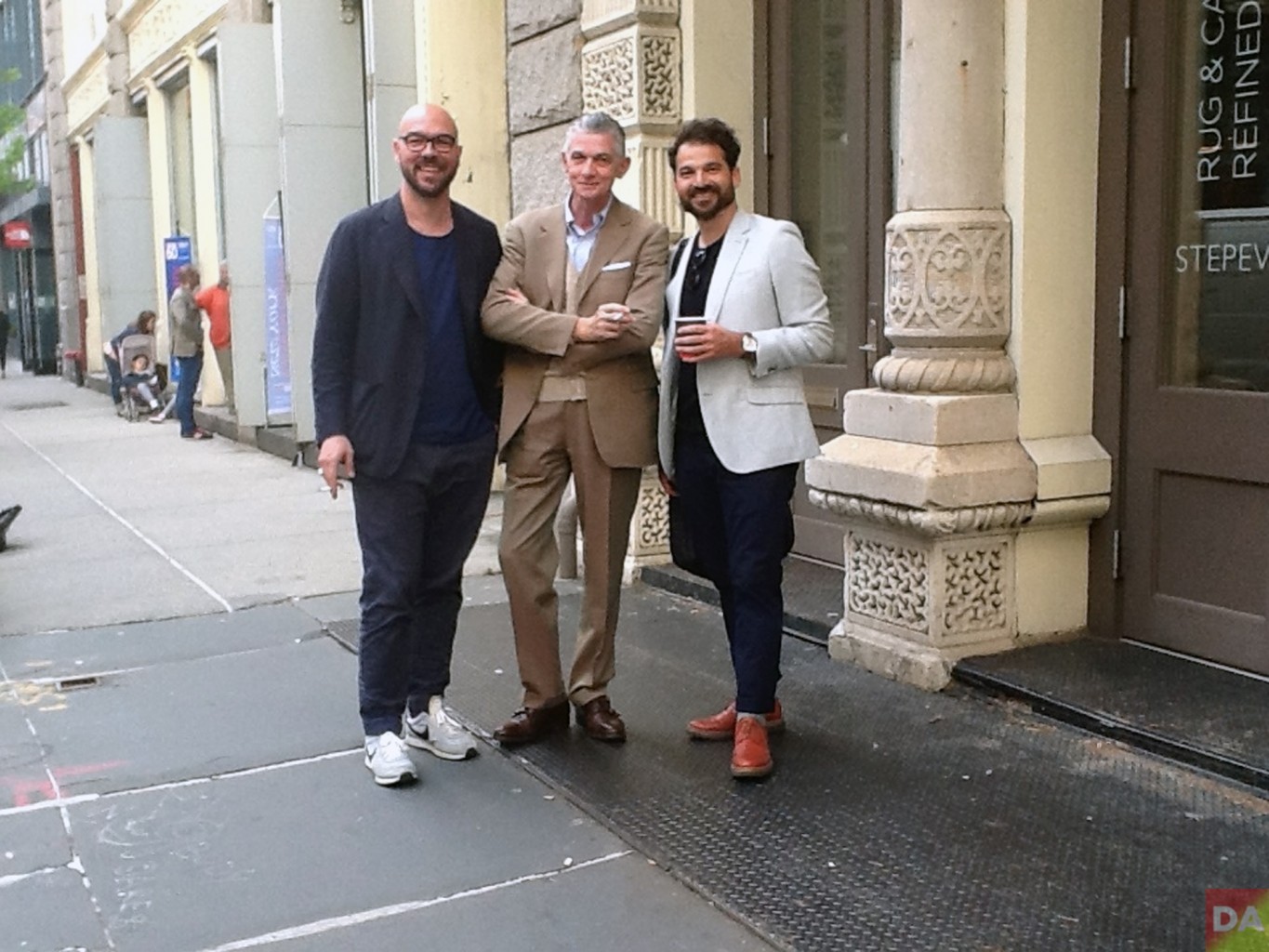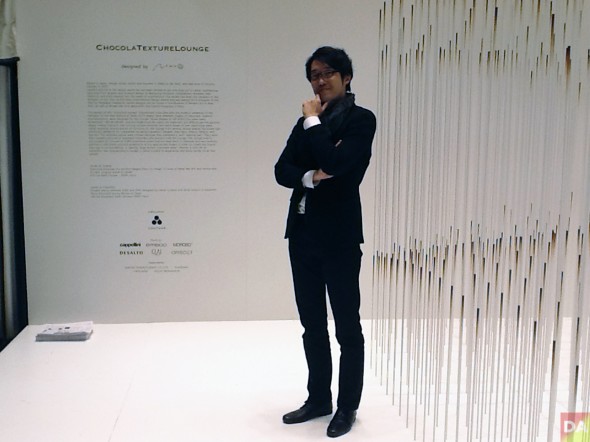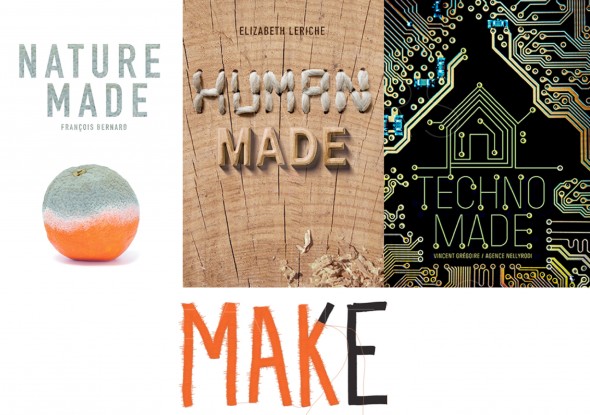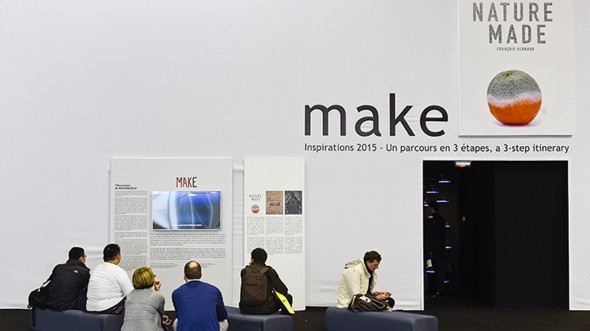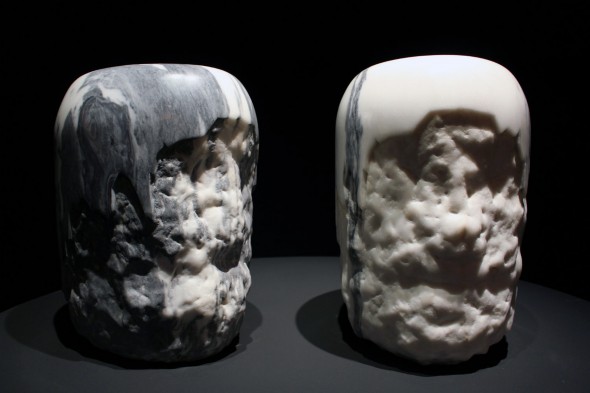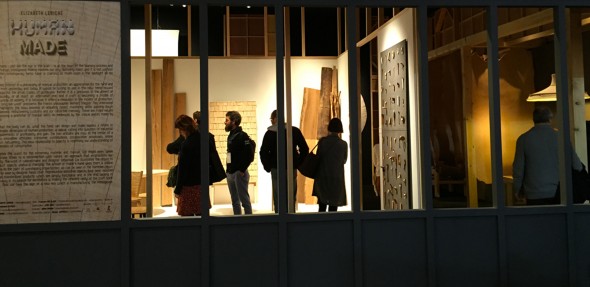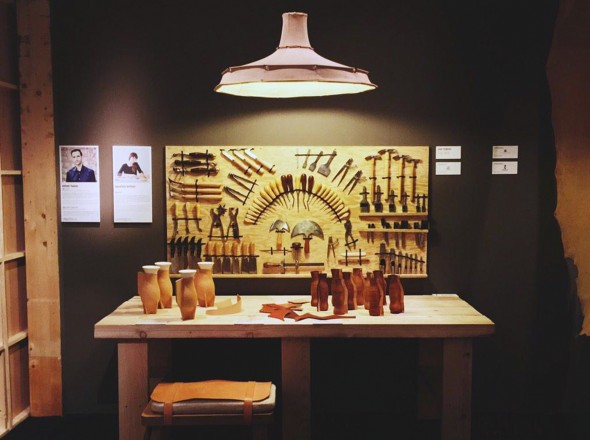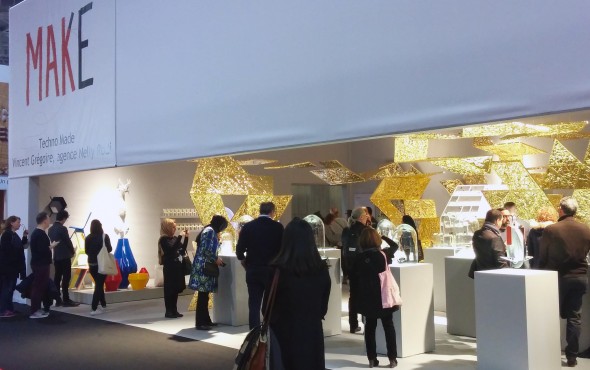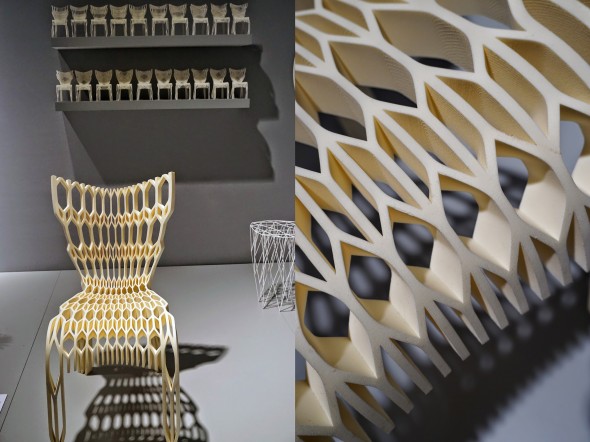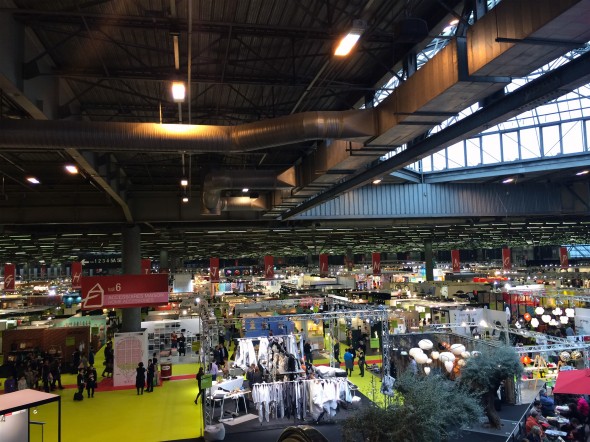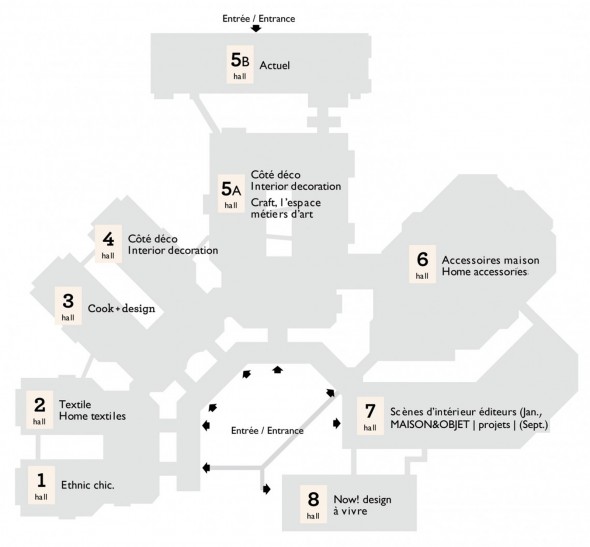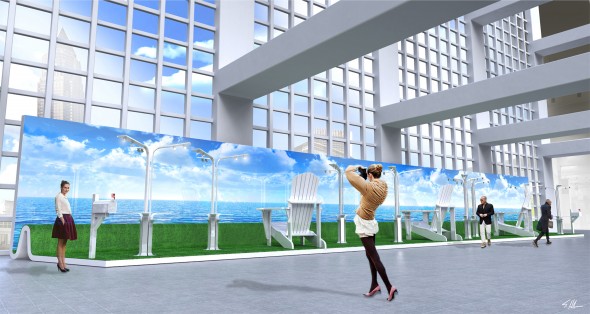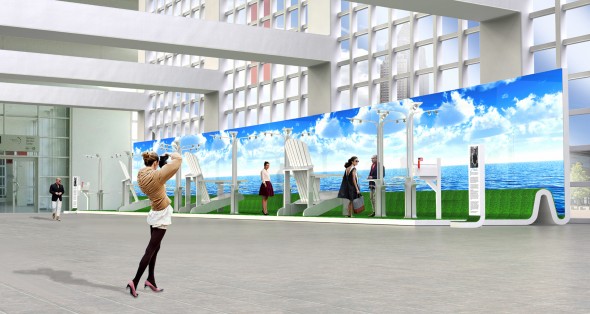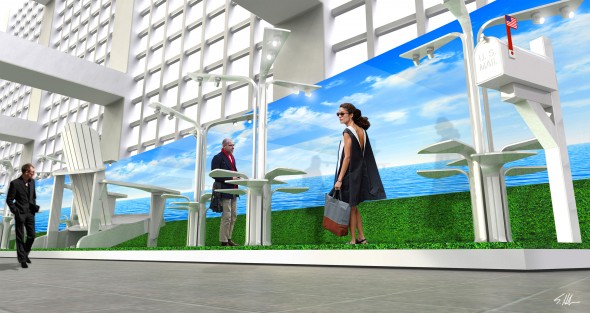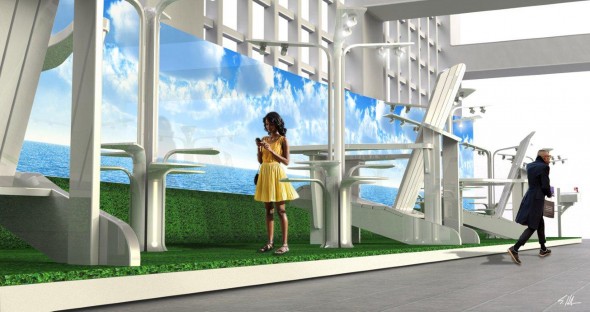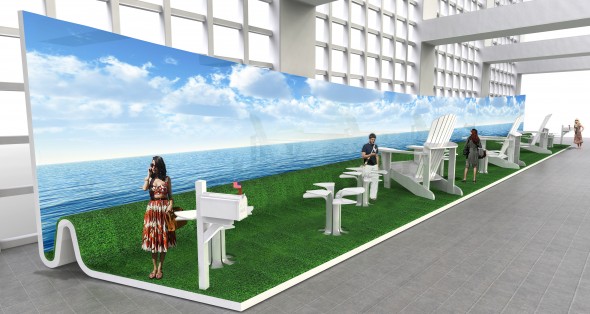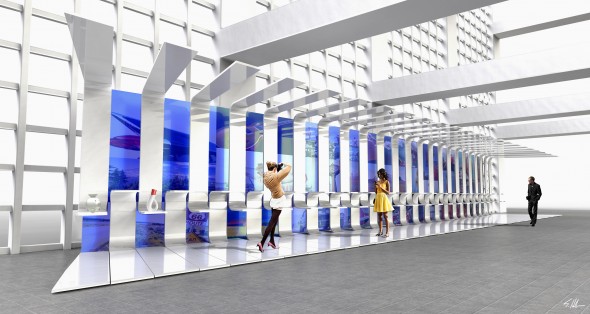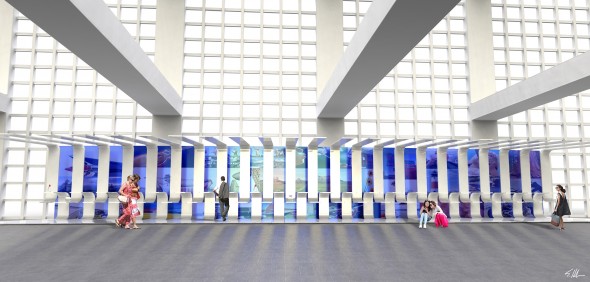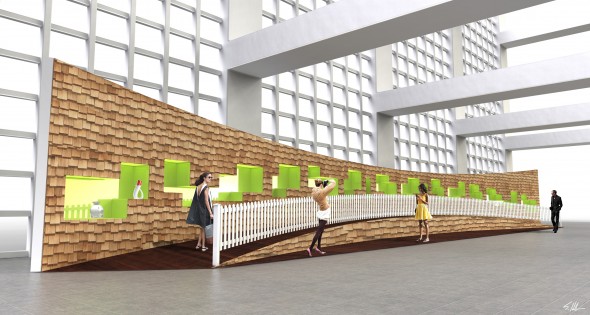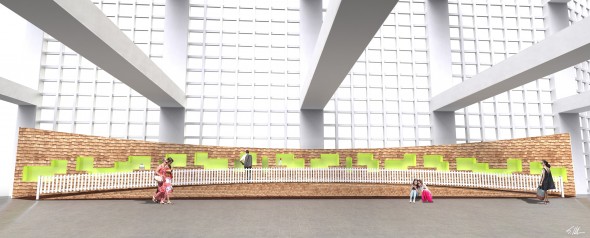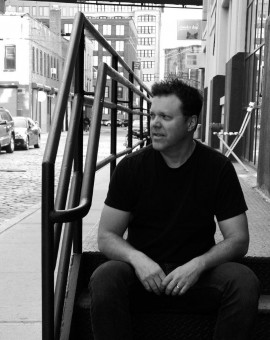above> a concept sketch for rockwell unscripted / image courtesy knoll
neocon 2016 has provided an opportunity to become better acquainted with start-up and design resource kontor. mia lewin is a founder and ceo, bill hanley is the vice president content / editorial director
[DesignApplause] mia, why don’t you give everyone a little bit of background on the concept of kontor?
[mia lewin] kontor is an inspiration and workflow tool for professional designers and their clients. you can think about it as a combination of houzz and pinterest for commercial interiors. we bring together designers and their clients, product manufacturers, and distributers, all on one image-based platform, allowing them to work together to design better offices. the company was founded by me, our cto, andy parsons, tom melcher, and kevin ryan — kevin is a serial entrepreneur here in new york behind gilt groupe, business insider, and many other successful companies. my background is really in the commerce and lifestyle industries. i’ve always been passionate about design and fashion. back in 2009 i saw home design, moving online and going much more global in its aesthetic. people wanted to mix and match styles and products, and we started kontor because we saw those same trends happening on the commercial interior side, especially in the tech industry, in silicon valley where i was based for about for 10 years. i really wanted to build this platform that was an inspiration. everybody can collect and create mood boards as well as collaborate together with their teams and their clients, all in one place, to come to design decisions better and faster.
[da] and how’s it going? what’s the past year been like?
[ml] the past year’s been great! about a year ago, at neocon we launched our private beta version of kontor. we had about 30 early partner design firms on the platform. and a year later, as we’re going into neocon again, we now have 850 of the leading design and architecture firms on the platform, representing more than 60 different countries. we launched the product publicly last november, and we’ve become the go-to platform to the designers and architects within these 850 firms. we’ve seen tremendous growth and excitement. in addition to the design firms, we also have around 200 of the who’s-who of design brands, contextually integrated into the site. these range from knoll, herman miller, steelcase, to trendsetters…like moooi, tom dixon, muuto, secto (who are, like me, from finland), among others.

[da] what is your criteria on how you select partners?
[bill hanley] we show work by design firms of all sizes and shapes, from hok and perkins + will to knoll and herman miller, down to solo practitioners doing tight-budget products. we want to reflect all sorts of different budgets, all sorts of different styles, and the range of interesting work that’s being designed out there. and then we curate what to showcase from large, big budget projects to creative small solutions.
[da] your growth is one thing…the way you started by just connecting people, has that changed? i’m not talking about where you’re thinking of going in the future but it started out very simple, just connecting people. all the articles, a little over six or seven months old, called you the pinterest in this field and it seems much bigger than that. but maybe that’s how you started? are you doing more than just giving people ideas? visual ideas?
[ml] yes, absolutely. our vision is really to enable the workflow for both the designer and their clients. and it’s really being able to provide a sense of what is going on in the industry and then provide the audience with the workflow tools to help throughout the project. starting with from the inspirational stage of looking at examples and ideas for a new interior, to collaborating on the overall aesthetic, to presenting and exchanging ideas and having discussions, all the way to making product decisions by facilitating conversations between the designers, the clients and the brands — everyone involved with purchasing decisions about what goes into an interior.
[da] what you’re saying is you’re now functioning as a part of the team? is that right?
[bh] it’s really a collaboration tool. we enable discussions that you have with your team, presenting mood boards, saying “i love this i hate that and what about this?” you know those have been very analogue historically. and what we’re doing is digitizing that conversation and also giving you information about products in a way that didn’t exist before. you can actually make one-to-one comparisons within those mood boards and start narrowing down decisions on what you’d want to include in a project. we’re not actively, as a company, participating in the design so much as providing a tool that enables people to communicate in a fast digital way.
[da] what’s the best way to utilize kontor’s resources?
[ml] we’ve built the largest database for office interiors in the world. on top of the database we built the industry’s first design-specific specific search and discovery tool. you can collect information on kontor but you can also collect from any website and manage all of your digital content, information on products, all in one place. then we provide those collaboration tools for you to make product and design decisions in a much more digital way. it’s all about searching and browsing for inspiration, seeing trends, collecting, collaborating and finally making those design choices.

[da] let’s come up with a case example. we have a design office and they have a client. now using your new digital tool, how does this whole process start and unfold?
[bh] designers come back to kontor to take a look at what’s new in workplace design. they know they can see new and interesting products every day on our site. when they eventually enter the workflow process, KONTOR seamlessly becomes a part of that process, either initiated by the designers or their clients.
users will also curate collections of images that they find interesting. they will also add other imagery that supplements it. for example, if a designer is working on a kitchen space. they can quickly collect a multitude of different kitchen spaces on kontor and then invite a colleague and/or client to collaborate on that collection. everyone is easily exposed to who’s doing what in the entire workplace design field. in the end, designers can educate client to make better decisions.
KONTOR also has the ability to gather images and keep a record of the process, a real timesaver. for example, let’s say they’re reading DesignApplause and grab a few images on your site—which unlike doing a random google search, always retains a link to where those images are found. once the mood board is created, using kontor’s comments feature, the team easily discuss what they have collected there. reference copies of all of the images in the collection can also be downloaded (with a prominent watermark attributing the photo) if there’s a need for a traditional physical pin-up presentation. you can also use those boards to collect, say, three different pendant lights with different price points then using the commenting function, conversations regarding selection come about. Kontor provides an easy-to-manage digital process from the ideation phase through the execution.
[da] are all these happenings confined to the desktop? do you have any mobile capabilities?
[ml] the site is completely responsive, which means it’s mobile- and tablet- enabled so you can use it as a web experience. we’ll be launching an actual mobile app later on.
[da] you mentioned a couple of events. what events are you attending?
[bh] we’ll be in your neighborhood for neocon coming up shortly. we’re giving out tote bags and also sponsoring the coffee bar in the vip lounge with bow truss coffee which i’m super excited about. they have amazing coffee! we make our rounds to all of the regular events. the latest was icff in new york. did you attend also?
[da] i was. i was really happy to see, this is my third year in a row, a remarkable growth of offerings. javits remained solid but offsite offerings grew. felt more like a european design week.
[bh] yes, also with me. one thing that was really surprising and fun was the expanded site unseen offsite. i think they did a really good job of keeping a really tightly curated and exciting group of the new makers.
[da] we just mentioned a few of the established companies doing new things, which is very exciting. i’m wondering to what extent the emerging talents are now inspiring the established, a topsy turvy process. let’s talk a little bit about your collaboration with knoll at neocon this year.
[ml] great, yes. we are collaborating with knoll to launch their new office collection by david rockwell and we’ll also be hosting a joint event at the knoll showroom. the new rockwell collection, unscripted, is a really unique and fun collection with a strong design aesthetic but that is also very adaptable to all kinds of offices and uses.
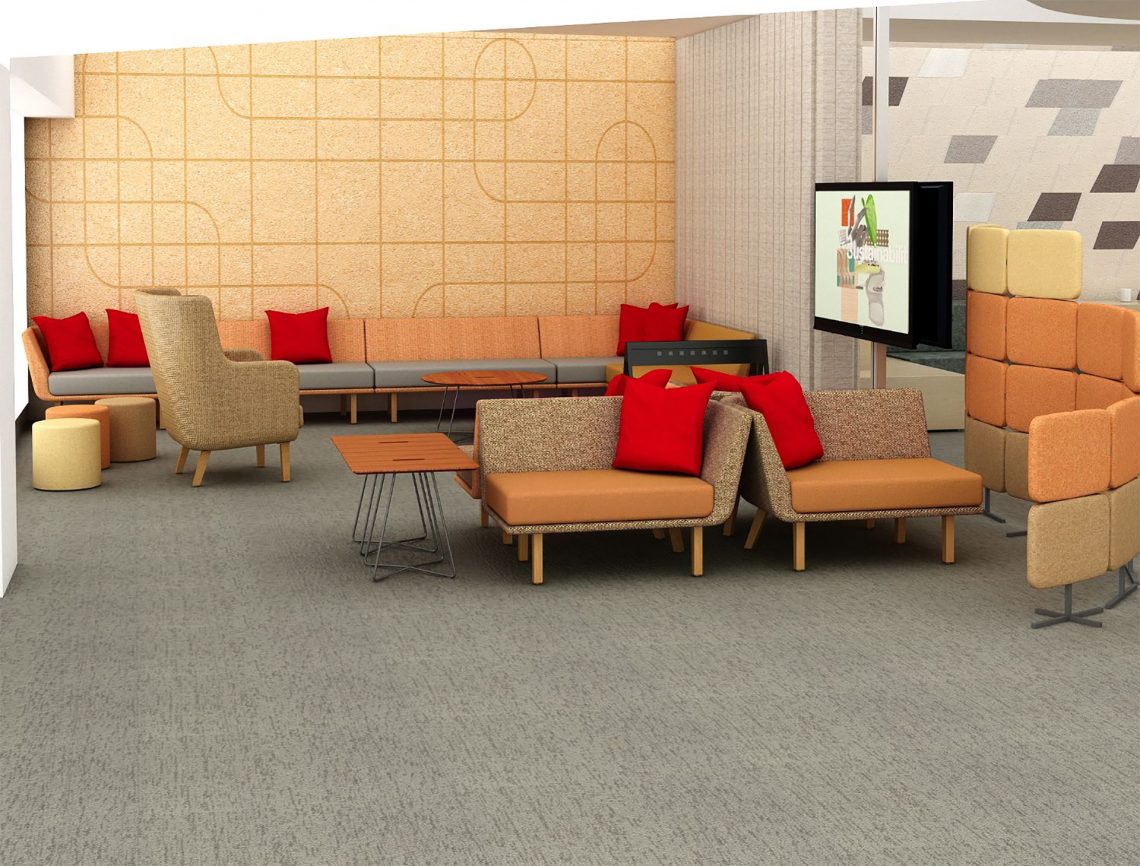
above> rockwell unscripted includes bleachers which can wrap around corners and come in a variety of customizable finishes / image courtesy knoll
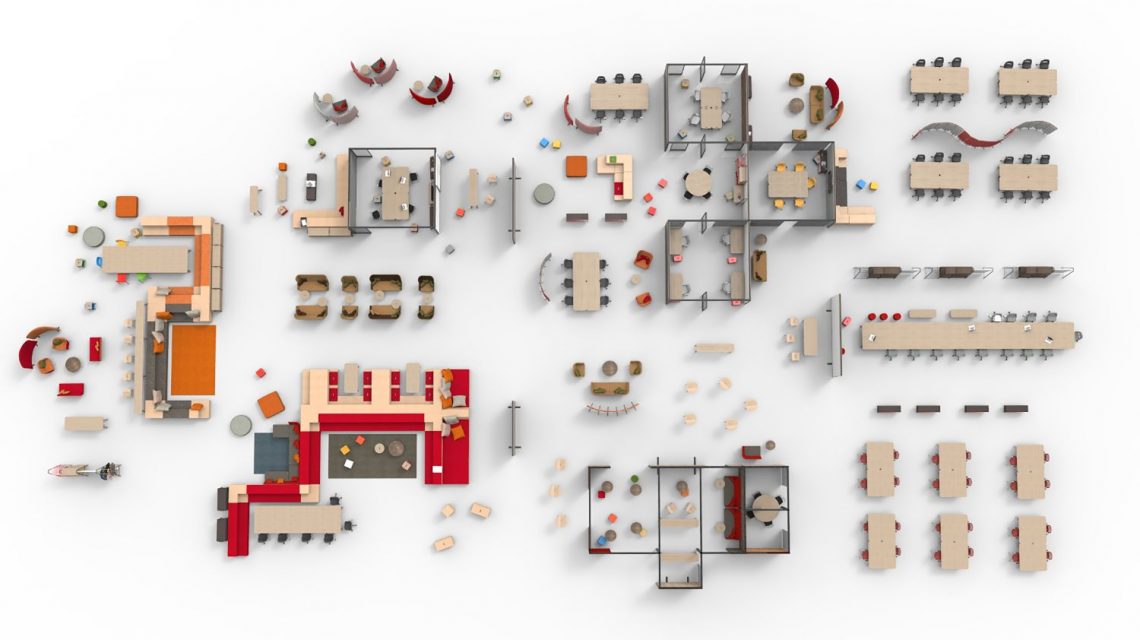
an overview of the entire collection / image courtesy knoll
[da] when is the event?
[bh] monday the 13th at 4:30p at the knoll showroom. ron, you probably already have one but i’ll send you an invite.
[da] thank you! how did knoll and kontor partner up?
[ml] we’ve had a longstanding relationship with them. knoll was our very first design brand partner. and we launched our private beta to the industry last year, together with knoll, at neocon in their showroom. and since then we’ve partnered with 200 leading design brands but knoll really was the first. and as part of the partnership we do a lot of co-promotional activities to really tell the story of their product and ours in a new, fresh way.
[da] i’m now very curious what your working space is like? is it the same as startup?
[ml] ha! the cobbler’s children have no shoes. so we’re a typical startup in the way that we’ve been super busy building the team and building the product. we are still subleasing with our sister company, zola, which is a wedding registry and another portfolio company of kevin ryan. we are in a very fun industrial-style space in tribecca in manhattan. as for our next own, real office we are starting the process very soon. we’ll probably have a design competition with our design partners and brands to create an office space that reflects the mixing and matching of different styles, a global aesthetic combining flexibility, technology and design. naturally we’ll be collaborating on kontor to make that come true.
[da] right answer 🙂 kontor is free to utilize now. how do you expect to monetize in the future?
[ml] the platform is free for everyone, for the designers, architects and their clients who are using us as their workflow tool. the offering for the design brands and dealers, will soon become a paid service as of july 1, 2016. it’s a contextual marketing tool for brands and their distributors to reach the key decision makers in the industry using the kontor platform. there will be a monthly subscription fee based on the bundle of services they opt into.
[da] can you give us an example of the insight the past year has presented to you?
[bh] in terms of macro-trends the influence of residential design and hospitality on office design has continued to grow. as everyone becomes able to work anywhere and everywhere. the kind of domestic comfort and sense of space more akin to a hotel lobby is becoming more prominent in the office space. we also do quarterly trend forecasts. we’ll have another one coming out at the end of the month.
because of the volume of projects and images that designers post on kontor every day, we’re also able to see micro-trends early. we start to see similarities among spaces emerging well before a lot other people. we’ve been tipping off our users with our findings. that’s everything from particular configurations of conference rooms to things like the return of the chesterfield sofa. who knew? it’s really interesting what you can see when you use our search to look at our database.
[da] the chesterfield, for example, is the trend spontaneous across different sectors or are people using, maybe the internet, and being influenced?
[bh] i think it’s a little bit of both. some of the trends are people wanting the same lighting fixtures they discovered in the media. on the other hand, there are ideas emerging independently that are responding to the way people work now. certain ways of treating lounge spaces and certain ways of treating workspaces. the actual use of the office space may have more influence on a trend than just businesses wanting their space to look like a prominent project.
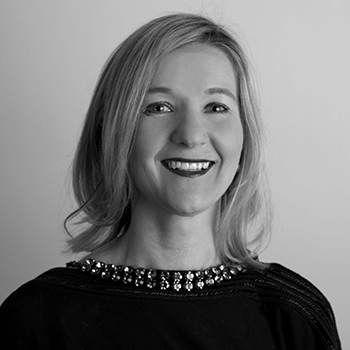
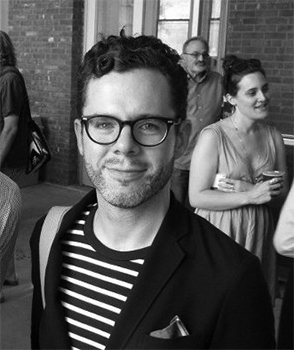
[da] is there anything that you want to talk about that we haven’t talked about yet?
[ml] we’ve covered a lot today, thank you. any questions that you may have?
[da] kontor is a very interesting product with a lot of promise and the best of luck to you. thank you for reaching out to DesignApplause and of course, we’ll see you at knoll!
[ml & bh] see you at knoll!
[ kontor ] [ knoll ] [ rockwell group ]




